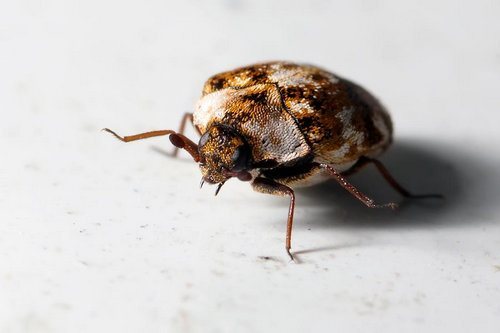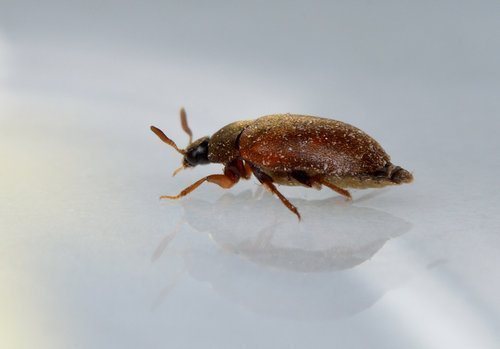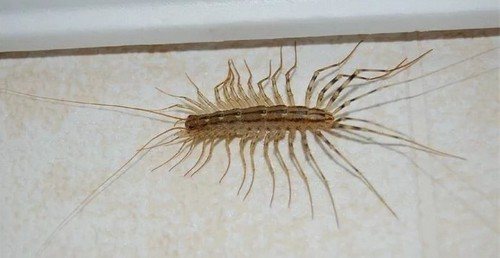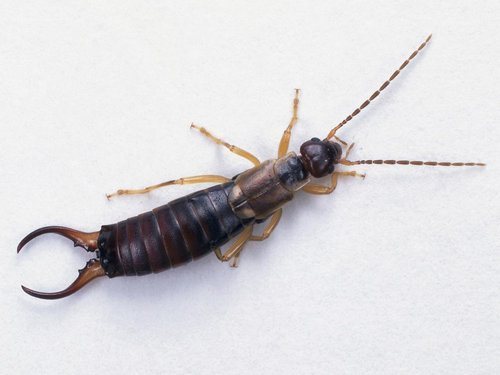Pests often appear in our apartments as uninvited guests. They spoil clothes, furniture, carpets, books, paintings, and generally irritate the human population of the apartment with their existence. One of these parasites is the carpet beetle, a pest of food supplies, clothing, museum collections and sericulture.
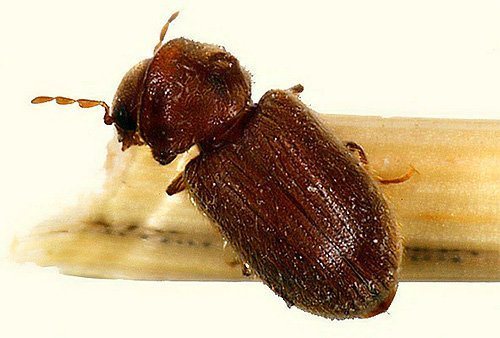
Carpet beetles are practically omnivores: they happily feed on meat products and fish, grain products, leather, wool and fur products, herbariums, glue, cheese and powdered milk, book bindings, museum exhibits and stuffed animals. In recent years, they have become the main pests of food supplies. In addition to spoiling food, skin beetles are dangerous to humans, as they bite people and pets painfully.
How to identify a skin beetle?
To correctly identify the pest that has taken over your apartment, you need to know exactly what it looks like. Considering that there are more than 600 species of leather beetles, this does not seem to be an easy task. But they are all similar.
Carpet beetles are small beetles, just over 1 cm in length and up to 0.5 cm in width. The body shape is oval, sometimes elongated, sometimes almost round. The back is convex, the abdomen is flat. The body is covered with a shell with very dark or black hairs and scales. The wings have a variegated yellow or reddish pattern. The head is small, slightly tilted or vertical. The eyes are small, not protruding.Short antennae are attached at the edge of the forehead in front of the eyes and can be hidden in a deep furrow on the chest. The short legs are tightly pressed to the beetle's abdomen.
Carpet beetles live in all climatic regions except the tundra, but most of all they love dry and hot climates. In nature, they live in the burrows of rodents and small predators, in the dried corpses of animals and birds. In living rooms, skin beetles can be found in dry and bright places: between window frames and on window sills, in the shades of sconces and chandeliers. But their larvae choose warm, dark places: cracks in the floor, baseboards under radiators, mezzanines, cabinets, shoe racks, suitcases with shoes, wool and fur items, containers with food products of plant and animal origin.
They take over an apartment on summer days through open windows or through brought things and products infected with larvae. A feature of rapid settlement is reproduction. One female beetle can lay up to 1000 eggs in 2-3 months.
Development cycle of the carpet beetle
The complete development cycle of the beetle from egg to adult depends on the type of beetle and environmental conditions, but most often there is one maturation of beetles per year. In a dry, hot climate, the development of 2 or even 4 generations of pests is not excluded.
The female leather beetle lays eggs in small batches in floor crevices or on the surfaces of objects, which will subsequently serve as food for the larvae. The eggs have an oval, slightly elongated shape. The period of development of the skin beetle in the egg is up to 55 days and passes into the larval stage.
The larvae are small caterpillars that are white or slightly yellow in color and have oval or spindle-shaped bodies with hard integuments covered with long hairs and a tufted tail. The length of the larva at the last stage of development reaches 17 mm.
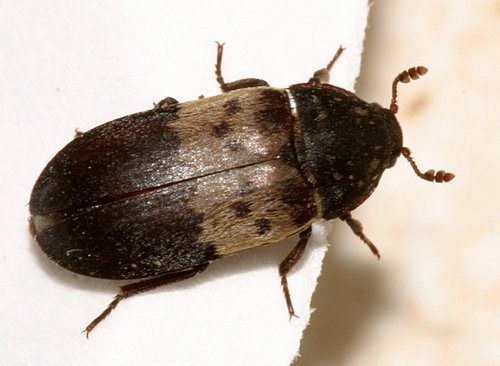
The duration of larval maturation and the number of their molts directly depends on the quantity and quality of food and on the surrounding temperature. Under favorable conditions, the larva molts approximately 6 times. The larvae are mobile and active around the clock. It is they who cause the greatest economic damage to humanity, while adult individuals only need to feed on plant sap. In unfavorable conditions, the larvae are able to go without food for up to 5 years, waiting out times of famine.
The pupal phase lasts from several days to 20. Pupation occurs in crevices or inside objects on which larvae developed. Thus, some types of larvae are able to gnaw passages up to 10 cm long.
How dangerous is the skin beetle?
Having settled in a person’s home, this beetle manifests its sabotage in two forms: it damages food supplies, personal belongings, and household items and threatens the health of apartment residents.
Despite the fact that the threat to human health has not been confirmed by scientific research, scientists admit the existence of several reasons for concern for human health:
- infection with helminths is possible due to the larvae feeding on animals and plant debris;
- the spread of a viral infection by beetles in the larval stage is possible;
- people susceptible to allergies may exhibit various allergic reactions to the presence of bugs in the apartment;
- Skin beetles do not suck blood, but their bites can cause skin irritation or allergies, and they themselves are quite painful. To minimize harm from an insect bite, treat the wounds with hydrogen peroxide or alcohol.
As a pest of stocks, the leather beetle can cause great economic damage due to its omnivorous nature. There is evidence of damage to cardboard, telephone cables, asbestos, plastic, building walls and agricultural vehicles. And this is in addition to their staple foods: fur, leather, books, meat products and grain.
Prevention of the appearance of the parasite
To prevent possible damage from the skin beetle, the following tips are recommended:
- Twice a year, inspect premises and clothing storage areas for contamination and treat them with boric acid powder or borax;
- place tablets flavored with lavender, camphor, wormwood in places where you store things, making sure that your family members are not allergic to their specific odors;
- Before putting things away for storage, thoroughly clean them, dry them, and, if possible, keep them in the cold for several hours;
- seal cracks and cracks in the floor surfaces, walls, window openings and window sills in the room, place mosquito nets on the windows;
- Carry out thorough cleaning of the premises more often using cleaning products and a vacuum cleaner.
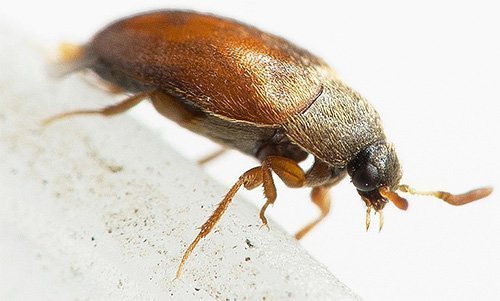
Ways to fight
If preventive measures do not help and the carpet beetle still appears in your apartment, you need to proceed to its destruction as quickly as possible.
The best option would be to find the beetles at the egg stage. To destroy eggs, you need to thoroughly wash things in soapy water, after soaking them in it.Then dry and carefully inspect for eggs. If necessary, repeat the procedure.
The most dangerous stages of the pest are larvae and adult beetles. To destroy them, you can try using boric acid powder, which is safe for humans, or special dusts and liquids, using which you must follow the instructions for their use. Particular care must be taken to treat cracks in the floor, cracks in the walls, and baseboards under radiators. These measures will cause the greatest damage to beetles from April to May and from October to November, when the larvae are more sensitive to the effects of pesticides.
If beetles are found in winter, freezing them will help. Carpets, fur coats, wool and other items infested with beetles are taken out onto the balcony for 5-10 hours, then brought into a warm place for the same period of time. The procedure is repeated several times. The freezing temperature must be at least 15°C below zero.
Timely adoption of measures to combat the skin beetle and prevention aimed at preventing it from settling in your home will help maintain the health of your family and extend the life of your belongings.


